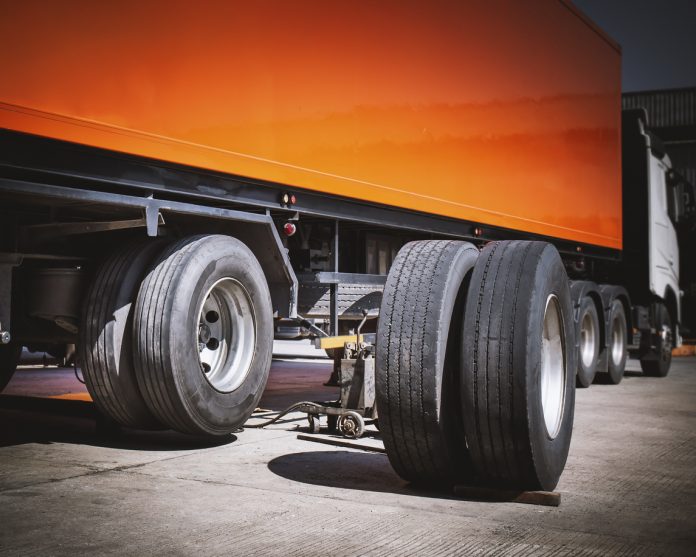Commercial vehicle wheel systems usually fail in one of three ways. The first is the wheel nuts not being tightened or “torqued” to specification… we’ll get to that in a bit, the second wheel bearings failing (lack of lubricant/improper installation) & finally the wheel nuts being over-torqued, stretching the studs past their yield point causing them to weaken & eventually break off. For the purposes of this article, we will be focusing on the first and last failure modes as they are the most commonly encountered this time of year. Wheel failures in the spring/fall months happen more often simply because we are removing and re-installing wheels and tires much more frequently during the other seasons. The more we interact with a wheel set, the more risk of failure exists.
Ontario is one of the toughest jurisdictions in North America when it comes to wheel failures. The HTA allows for fines up to $20,000.00 for drivers and $50,000.00 for carriers. Wheel failures cause several serious injuries and fatalities each year. Thankfully, that rate is declining because we know more now about wheel failures, implemented correct installation procedures, communicated the stiff penalties to the drivers, compelled them to inspect their vehicles, trained technicians, used better parts and materials as well as installed devices which show the driver a loosened fastener exists.
We put a lot of pressure on drivers, we often lay blame at the driver’s feet once the investigation is concluded. It is the driver, who ultimately had all of the authority & could have prevented the wheel separation, right? While a driver is legally responsible for inspecting their equipment, making sure it is free from defects before moving it on public roadways, finally, completing and submitting a report to the carrier, it does not stop there. Like most OHS laws in the country, the worker has the responsibility to bring hazardous conditions and acts to the attention of the employer who must anticipate & correct them using a variety of controls at their disposal. Which leads me to the following training needs question.: how much do our drivers really know about wheel separation? Are they aware of how wheel components can fail? Do they have basic knowledge of how to properly install a wheel, ensuring it is being done correctly roadside? Do they know the visual signs of failing wheel components? Has the importance of checking this vital vehicle system been impressed on them? We give drivers a lot of responsibility, but do we set them up for success? Oftentimes, in my experience the answer is no. What I am suggesting is that the driver is the final barrier, the final decision whether that vehicle makes it to the public road. Why not give them the knowledge they need to succeed? In cases such as the one outlined above; it is one of those accountability without control situations a driver encounters in their work.
Most properly trained drivers can adequately explain the legal duty not to drive a commercial motor vehicle with a major defect present. Some drivers may also be able to explain that a loose, missing, or ineffective fastener is a major defect, or even that evidence of imminent hub, bearing or fastener failures are major defects, and the driver should not operate or draw a commercial vehicle until they’ve been reported & corrected. Many drivers can explain that there are harsh penalties in Ontario associated with wheel detachment, but do they know how to prevent wheel separation? Again, the answer is often, no. Leaving the driver to feel powerless to defend themselves against this serious safety issue. Drivers should receive wheel separation training as a part of a comprehensive vehicle inspection training course to give them the confidence they need to perform their duties.
When investigating safety sensitive task failures such as wheel installation, we must analyze several factors always with the view of determining root cause & preventing subsequent failures. We can use tools such as: 5-why, FMEA, Swiss cheese, Taproot®, ICAM, to give us a roadmap toward the ever elusive ‘root cause’ although this list is not exhaustive, and your organization may have its own methods; it’s a good start.
In any event, we should at a minimum look at changes in the work system, look at the work as imagined vs work as done gap, evaluate human factors such as attitude, training, stress, workload, analyse organizational factors such as cost cutting measures, procurement methods, training budgets, PM programs & scheduling. Having completed numerous investigations, we can only conclude one thing: single point of failure doesn’t exist; generally, it takes multiple failures to bring about a catastrophic incident such as a wheel failure.
Throw the wheels on, tighten, and leave right? One common failure mode is fastener over-torque. Engineers have specified that most fasteners on large commercial vehicles (M22 x 1.5) are to be torqued to between 450-500ft/lb. (Some commercially available1” drive impact wrenches can tighten fasteners to 1450 ft/lb) All 10 studs should be torqued to a consistent value using a star or criss-cross pattern otherwise, one fastener can lose its clamping force causing play in the wheel, which will either result in other nuts “clocking” or loosening and/or the studs shearing off over time. Most importantly, wheel installers should tighten fasteners to below the specified torque value and finish with a calibrated torque wrench, although more time consuming, this procedure ensures that all nuts are torqued to consistent and correct values.
Long story short, in any safety sensitive job or task, be careful not to oversimplify the system failure by blaming a single point of failure. Look beyond basic legal requirements and regularly train your staff to identify & report unsafe acts and situations.





















